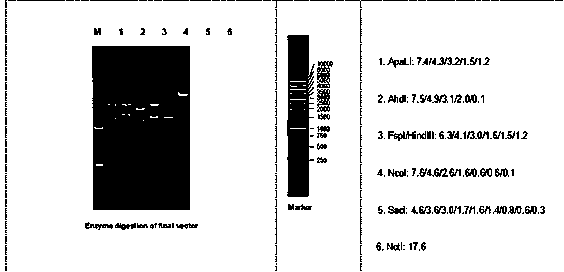Genetically-modified non-human animal and application thereof
A genetically modified, non-human technology, applied to genetically modified non-human animals and their application fields, can solve the problem that human protein C cannot function effectively.
- Summary
- Abstract
- Description
- Claims
- Application Information
AI Technical Summary
Problems solved by technology
Method used
Image
Examples
Embodiment
[0228] Constructive knock-in mouse model of human protein C
[0229] Targeting carrier
[0230] A targeting vector for knocking the human protein C gene into the mouse (C57BL / 6) protein C gene location was constructed. The nucleotide sequence of the targeting vector is set forth in SEQ ID NO:1.
[0231] The mouse protein C gene (NCBI reference sequence: NM_001042767.3) is located on mouse chromosome 18. Nine exons have been identified, of which the ATG of exon 2 is the start codon and the TAG of exon 9 is the stop codon.
[0232] Human protein C gene (NCBI reference sequence: NM_000312.3) is located on human chromosome 2. Nine exons have been identified, of which the ATG of exon 2 is the start codon and the TAG of exon 9 is the stop codon.
[0233]For the knock-in model mice described herein, the region from the ATG start codon to the TAG stop codon of mouse protein C was replaced with the coding sequence of human protein C. Thus, the targeting vector includes the...
PUM
 Login to View More
Login to View More Abstract
Description
Claims
Application Information
 Login to View More
Login to View More - R&D
- Intellectual Property
- Life Sciences
- Materials
- Tech Scout
- Unparalleled Data Quality
- Higher Quality Content
- 60% Fewer Hallucinations
Browse by: Latest US Patents, China's latest patents, Technical Efficacy Thesaurus, Application Domain, Technology Topic, Popular Technical Reports.
© 2025 PatSnap. All rights reserved.Legal|Privacy policy|Modern Slavery Act Transparency Statement|Sitemap|About US| Contact US: help@patsnap.com



